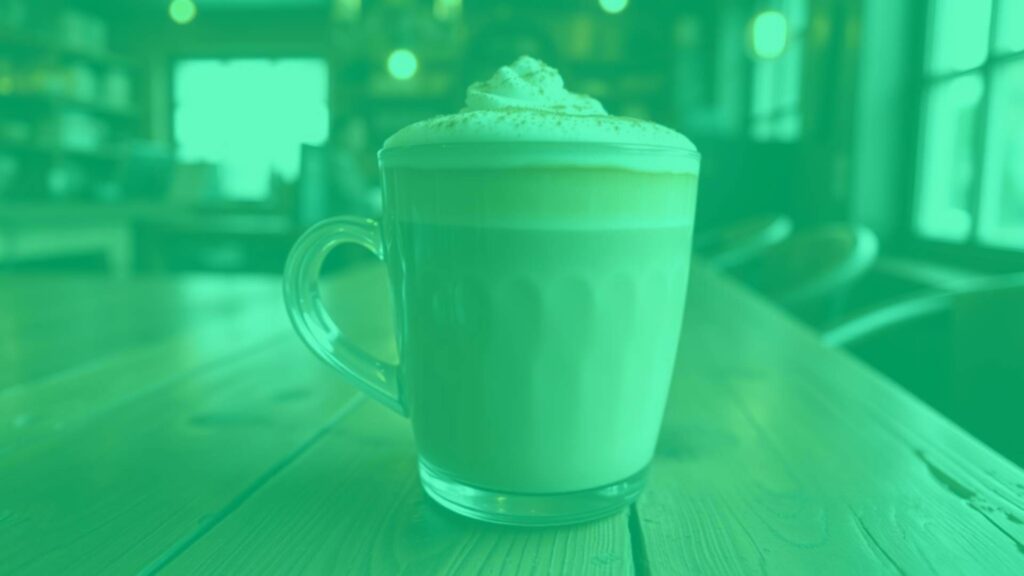Understanding the Dirty Chai Latte
The dirty chai latte is a modern coffeehouse creation that artfully blends the robust flavors of espresso with the aromatic warmth of spiced chai tea, all smoothed by a layer of creamy steamed milk. This inventive drink offers a unique taste profile, seamlessly uniting Eastern tea traditions with classic Italian coffee culture in every comforting cup.
What Sets the Dirty Chai Latte Apart?
At its core, the dirty chai latte stands out for its harmonious marriage of potent espresso and fragrant masala chai. Where a standard chai latte highlights black tea, warming spices, and milk, the “dirty” version introduces an espresso shot (or more), adding deep coffee notes, increased caffeine, and a subtle bitterness that complements the spice medley. Its appearance is typically a tawny, milky hue with a velvety microfoam surface, sometimes dusted with cinnamon or nutmeg.
Essential Elements and Flavor Profile
The essential ingredients that define the dirty chai latte include:
- Masala Chai: Black tea infused with spices such as cardamom, cinnamon, ginger, cloves, and sometimes black pepper.
- Espresso: A freshly pulled shot or double shot for depth and a caffeine kick.
- Steamed Milk: Typically whole or 2% milk, which can be swapped for non-dairy options.
- Sweetener (Optional): Honey, sugar, or syrups to taste.
The resulting drink boasts a bold, complex flavor: the creamy sweetness of milk mellows the espresso’s intensity while allowing the chai’s layered spice bouquet to shine. The mouthfeel is silky, with a warming and slightly spicy finish.
Origin and Cultural Background
The dirty chai latte does not have deep historical roots in Italy; rather, it developed in Western coffeehouses, particularly in the United States and Australia, over the past few decades. The drink capitalizes on the global popularity of spiced chai and espresso-based beverages, reflecting contemporary trends in coffee culture that favor hybrid flavors and creative experimentation. Its name playfully references the “dirtying” of traditional chai latte with an espresso shot.
Preparation & Service Insights
The drink is typically prepared by brewing strong masala chai (from loose leaf or a concentrate), extracting one or more shots of espresso, and combining these with steamed milk. The ratio of coffee to tea can be adjusted according to preference, and it is customarily served in tall mugs or large cups to accommodate the generous volume of liquid. The final touch is often a sprinkle of spice on the milk foam, enhancing both aroma and presentation.
Variations and Ingredient Swaps
The popularity of the dirty chai latte has led to numerous creative spins, such as:
- Iced Dirty Chai: Served cold over ice, especially popular in warmer weather.
- Double Dirty Chai: Made with two espresso shots for an extra caffeine boost.
- Vegan or Dairy-Free Versions: Substitute steamed milk with oat, almond, soy, or coconut milk.
- Decaf Espresso: Ideal for those avoiding caffeine but still craving the flavor combo.
- Less Sweet Options: Simply omit sugar or sweeteners for a spicier, more robust taste.
Pairings and Serving Suggestions
Dirty chai lattes pair delightfully with pastries and baked treats. Complementary options include spiced biscotti, almond croissants, ginger cookies, or even a simple buttered scone. Their unique blend of flavors also sits well alongside mildly sweet and nutty desserts or light savory breakfast dishes like quiches.
Frequently Asked Questions
Is a dirty chai latte very caffeinated?
Yes, it is typically more caffeinated than a regular chai latte, thanks to the addition of espresso, though you can tailor the amount to suit your preference.
Can I use instant chai mix or store-bought concentrate?
Absolutely—many cafes and home recipes use concentrates for convenience. For a more nuanced flavor, freshly brewed loose leaf chai is often preferred.
Does it have to be made with dairy milk?
No, plant-based milks work very well and are commonly used in modern coffee shops.
Is the dirty chai latte considered an Italian coffee drink?
While espresso anchors the drink in Italian tradition, the dirty chai latte is a global, fusion beverage rather than an Italian classic. Its popularity draws on both Italian espresso and Indian chai influences with a contemporary twist.

